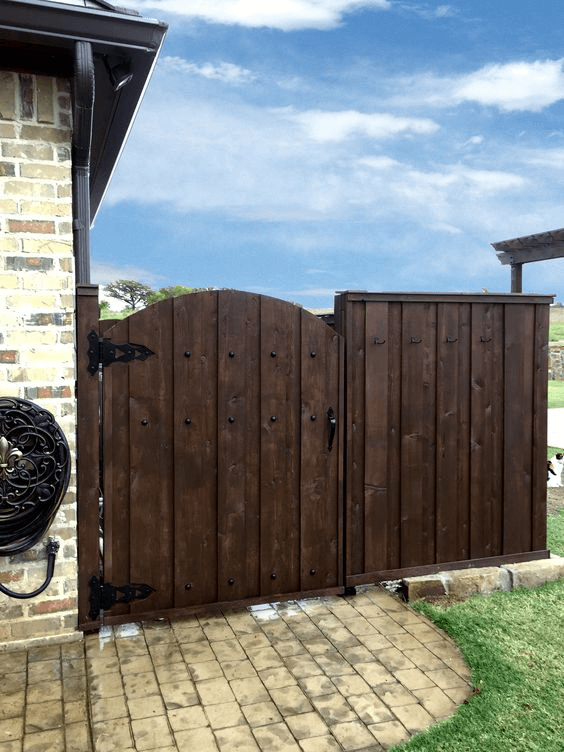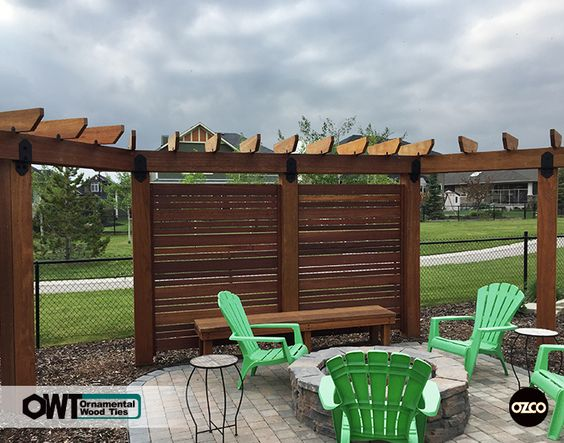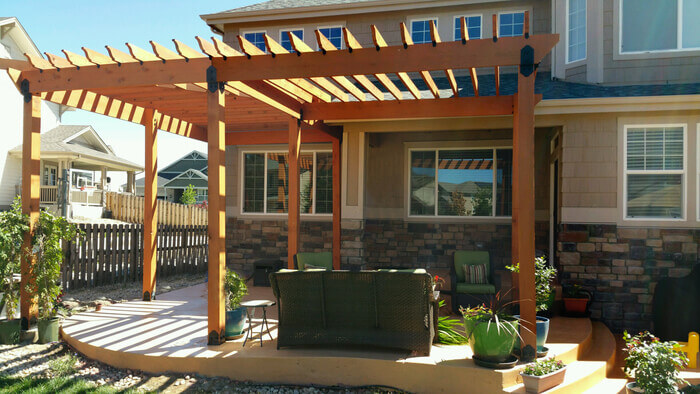Simple Garden Bench Design Ideas to Improve Your Yard
There are a lot of great accessories you can add to a yard without having to spend a lot of money. One time, I decided I had to have a rustic garden bench in my backyard–it was the perfect addition to my big bed of peonies–but all the benches I considered were a bit too pricey for my budget. But I remembered I had a lot of leftover wood and hardware from other projects that I could repurpose. In the end, I built a simple garden bench design that fit my landscape for next to nothing.
Building a garden bench yourself is a great option as it’s a beginner project that most people can finish in a day. It’s a good low stakes way to get your feet wet on building outdoor structures. On top of that, this is a design that is easily and safely adaptable. That means there’s sure to be a simple bench design that will fit your vision for your yard. In that spirit, we’ve got a few garden bench design ideas for your project.
Basic Garden Bench Design Ideas for Beginners
Garden benches are a bit heavier than your standard sidewalk bench. They must be, as they’re often on uneven ground. Materials vary, but they’re almost always wood, as the purpose of the bench is to blend with the scenery, not overpower it. You can also build them to serve a specific purpose, like providing storage. Some of the more common designs are:
- Backless benches: Most benches are composed of two main platforms–the seat and the backrest. More rustic garden benches will often use a backless design, making them extremely simple to put together.More intricate backrests can be used in more formal gardens, though they work in simpler, contemporary settings as well.
- Planter benches: Planter benches make use of additional compartments that can hold live plants or flowers. By adding a planter to either end of the bench, or incorporating one into the middle, you can make the bench part of the garden. The simplest way to do this is to attach a wooden cube, which can hold a pot or a liner for growing plants.
- Storage benches: Storage benches have movable panels that you can lift to access storage space inside the bench. This is a very useful option (space for gardening tools!) that is surprisingly easy to do with a few decorative hinges.
- Table benches: This is a design that’s a bit more complex, but in it, a center console is added that separates the bench into two separate seats. For a unique twist, a modified version of the storage bench can be created in which the center console can also be opened and used for storage.
There are a lot of ways you can make your bench your own. With a few twists on a basic garden bench design plan, you can add depth to the design and make it fit your needs–whether they be for more storage or for table or planter space. Adding these features can be extremely easy with a few additional pieces of hardware. Here are some simple ideas.
Building on a Basic Garden Bench Design
Assembling a simple garden bench can be as easy as creating a large rectangular box. One way to make your bench more interesting without making it harder to build is to add decorative hardware such as hardware designed to look like wrought iron. Here are a few clever ways you can use hardware to customize your design.
- Consider ornamental inserts on the backrest: If you choose to add a backrest to your bench, you can use some simple, ornamental wrought iron-look inserts to add detail. Ideally, for this, you’d want to use a decorative insert that doesn’t require predrilling, to ensure a firm, flat connection. In addition, you’ll want something resistant to corrosion. Hot dipped galvanized and powder coated inserts will resist rust that could be caused by the elements or from your sprinkler system.
- Use hinges to turn it into a closed chest: By using a basic butterfly hinge, you can create a top for your bench that opens, allowing you to use the bench for storage. An ornamental hinge is a good choice, as this is going to be visible work. Of course, you don’t have to use a hinge, as you could create a storage bench with a completely removable top. However, I find that the hinge makes it easier to open and close, holds up against the elements better, and is a good excuse to add decoration.
- Repurpose rafter clips to hold a tabletop: You can use rafter clips, like the type you might use for a deck or pergola project, to hold a small table in the center of your bench. It’s as simple as creating a square frame and adding a platform on top. Again, parts of this structure will be visible, so you’ll want to use clips that were designed to be seen.
The good thing about a garden bench project is that many of these modifications can be made using leftover items from other projects. I know I always buy more rafter clips and hinges than I need, just so I don’t run out in the middle of a project. With a few left-over items from a multi-level pergola project, I put together a great garden bench that offered me a place to store gardening tools. I used cedar so it would stand up against the elements while also being resistant to pests like termites and carpenter ants.
I adapted a simple plan from OZCO, though I added a backrest and some ornamental inserts to make it my own. I strongly recommend taking a look at OZCO products (as well as their plans) if you’re looking to spruce up a project like a garden bench. The hardware in their OWT (ornamental wood ties) line is gorgeous, being designed to look like wrought iron and to make projects look finished and elegant. But their hardware isn’t all looks–these fasteners work with ACQ pressure treated lumber, and have a layer of powder coating to make them resistant to the elements. They’re also hot dipped galvanized, which is an extra protective way of galvanizing metal to make sure it doesn’t rust or break down. Basically, OZCO hardware is incredibly tough and good looking–perfect for a garden location (I have a relative who used OZCO hardware for a raised garden bed). Using OZCO accents and a good starting plan, I created a great addition to my garden in less than a weekend. No matter how experienced a DIYer you are, you can do this too, and come away with a useful garden bench that you love.












Leave a Reply